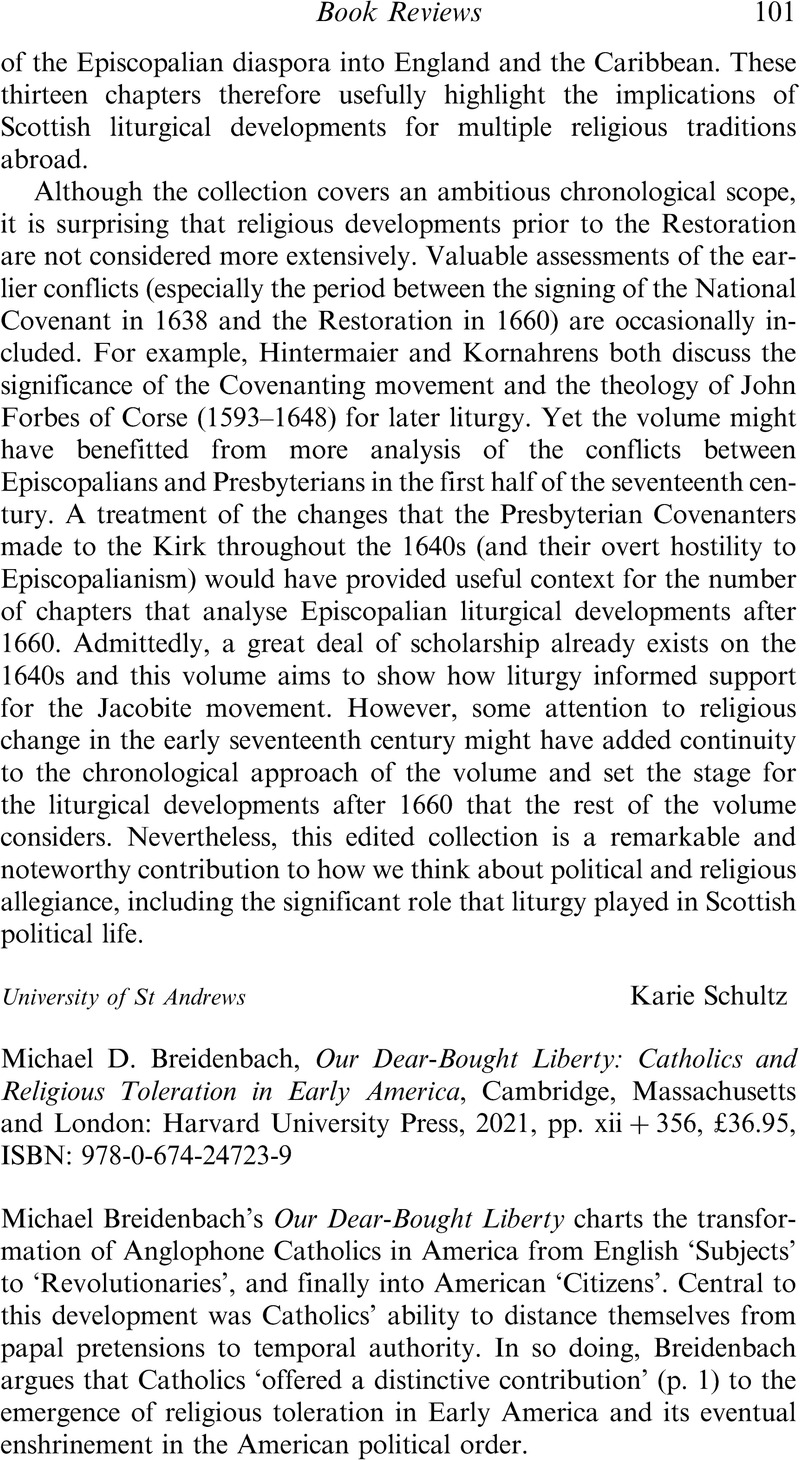No CrossRef data available.
Article contents
Michael D. Breidenbach, Our Dear-Bought Liberty: Catholics and Religious Toleration in Early America, Cambridge, Massachusetts and London: Harvard University Press, 2021, pp. xii + 356, £36.95, ISBN: 978-0-674-24723-9
Published online by Cambridge University Press: 08 June 2022
Abstract

- Type
- Book Review
- Information
- Copyright
- © The Author(s), 2022. Published by Cambridge University Press
References
1 Francis Oakley, The Conciliarist Tradition: Constitutionalism in the Catholic Church, 1300–1870 (Oxford: Oxford University Press, 2003), ch. 2.
2 Anthony J. Brown, ‘Anglo-Irish Gallicanism, c. 1635 – c. 1685’ (Unpublished Ph.D. Thesis, Cambridge University, 2004), 223–32; Peter Walsh, Valesius ad Haroldum ([London], 1672), corrected pagination 26–7; The History & Vindication of the Loyal Formulary…([London], 1674), xxxi; and Four Letters on Several Subjects… ([London], 1686), 313–4.
3 Newsletters from the Caroline Court, 1631–1638: Catholicism and the Politics of the Personal Rule, ed. Michael Questier, Camden Fifth Series 26 (Cambridge: Cambridge University Press for the Royal Historical Society, 2005), 261n1214.



